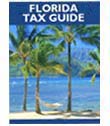by Robert Borges on October 15, 2020
For those of us nearing retirement and hoping to find our utopia, it often begins with a basic question: “How are the winters?”
Many northerners and those from climates where parkas and snow shovels are the norm for a few months each year choose to migrate south or to markedly warmer locales for the winter season. Commonly referred to as “snowbirds,” when they hit retirement age, it’s time for them to hit the road. Some snowbirds find a regular spot close to family and friends in the winter, while others change up their annual migration. While it all comes down to personal preference, lifestyle desires, and of course finances, there are some considerations in finding a place to spend your winter months, most notably, should snowbirds rent or buy?
Why Snowbirds Should Rent
January through March or April is peak snowbird season. Some migratory renters settle on a location to return to year after year, and often rebook the same place before they depart each spring. Other renters like variety and switch up their snowbird rentals every year—researching and booking as early as August. Aside from the variety and keeping your options open, real estate market volatility and the costs and burden of upkeep are also big factors for snowbirds who choose to rent instead of buy.
Here’s a ballpark on the average rent you can expect to pay during winter/spring months in a few seasonal destinations:
- Arizona: $2,500-$3,500 (condo), $3,000-$9,000 (single family).
- Alabama: $800-$1,500 (condo), $1,000-$2,500 (single family).
- Texas: $900-$2,000 (condo), $1,400-$2,500 (single family).
- Florida (Central): $1,500-$6,000 (condo), $2,500-$10,000 (single family).
- Florida (E. Central Coast): $2,800-$6,000 (condo), $3,200-$9,000 (single family).
- Florida (Panhandle): $800-$2,200 (condo), $1,100-$3,500 (single family).
- Florida (South): $2,500-$8,000 (condo), $5,000-$12,000 (single family).
Why Snowbirds Should Buy
On the other hand, many snowbirds like to find their ideal winter spot and buy a second home there. There’s just something about having your place with your things and avoiding the inconvenience of excessive packing and prepping before the winter move. And of course, owning a home is usually a wise financial move if you can swing it. But even though your winter vacation home can be a smaller house or condo purchase, remember that there are the added costs of insurance, property taxes, and furnishing another residence. All that said, some snowbirds are far more content with a permanent winter location near friends and family where happiness is part and parcel with a comfortable routine. For them, buying is a no-brainer.
The good news for snowbird homebuyers is that some states are more affordable than others.
The best time for snowbirds to buy is late spring, when much of the competition has flocked back home.
Best Places For Snowbirds
Here’s a list of first-class snowbird communities with plenty of unique options for those seeking a second seasonal home, conveniently broken down by state.
For many snowbird retirees, the decision on whether to rent or buy is an easy one. Not everyone can qualify for a second mortgage or afford another home purchase. Renting is the clear choice for them. Others have no issue with the finances and know that the cost of rent is likely to rise year over year anyway, so buying is the way to go. If the financial difference between renting and buying is a wash, the more intangible factors we described earlier should be carefully considered before you begin your great migration.
